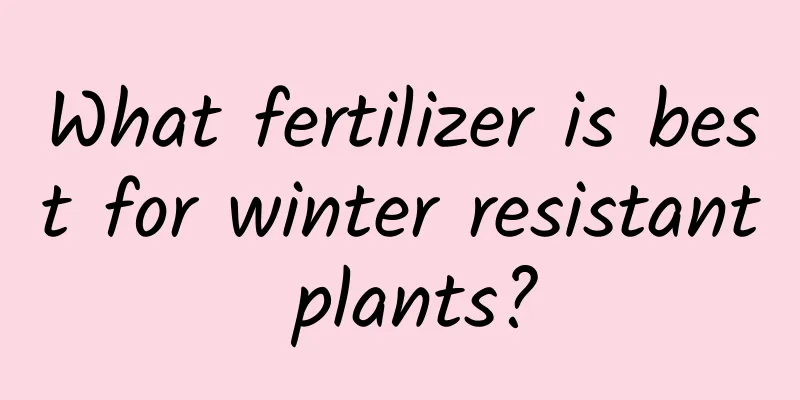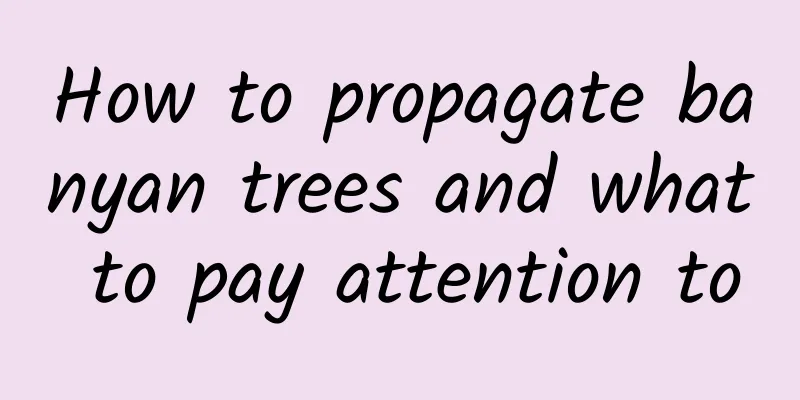What fertilizer is best for winter resistant plants?

Winter fertilization timeGenerally, winter resistant plants need to be fertilized four times a year. The first fertilization should be carried out in February and March, the second fertilization should be carried out in April and May, the third fertilization should be carried out in June and July, and the fourth fertilization should be carried out in September and October. Fertilization will be stopped after September to promote the formation of flower buds. Liquid fertilizer can be applied after the flowering period. What fertilizer to apply for winter resistantIn the spring, you can apply bud-destroying fertilizer mainly composed of nitrogen fertilizer to the winter resistant plant. You can also spray the leaves with a diluted mixture of potassium dihydrogen phosphate, urea and rice vinegar to promote germination. The leaves will also be well stretched. In the early stage of flowering, it is necessary to reduce the application of nitrogen fertilizer and increase the application of phosphorus and potassium fertilizers to promote the differentiation of flower buds, which is beneficial to the formation of flower buds. Autumn is the period of nutrient accumulation for winter resistance. A mixed fertilizer mainly composed of phosphorus and potassium fertilizers can be applied every half a month, combined with foliar spraying to improve its cold resistance. It enters a semi-dormant period in winter. Although the demand for nutrients is small, its reproductive growth has not completely stopped. You can apply a dilute phosphorus and potassium liquid fertilizer when watering. Winter fertilization methodIn February and March, when the winter-resistant plant sprouts, nitrogen fertilizer should be applied mainly. In April and May, nitrogen fertilizer and potassium dihydrogen phosphate can be applied alternately to promote the growth of branches and leaves and the formation of flower buds. In June and July, the temperature rises, its growth is slow, and it absorbs less nutrients, so a thin nitrogen fertilizer can be applied. July and August are the dormant period of the winter resistant plant, and fertilization can be temporarily stopped. From September to October, it enters the second growth period, and the demand for nutrients is higher. At this time, it is also necessary to fertilize in time to meet the water and nutrient needs of the roots. Precautions for winter fertilizationWhen applying base fertilizer to the winter nymph, it must be fully decomposed before application to avoid burning the roots. Watering is required in time after fertilizing. Fertilizer should be applied in appropriate amounts, not too much, and raw or concentrated fertilizers should not be used. Fertilizer should not be applied to the same place every year to avoid affecting the growth of the root system. |
<<: Can red beans be planted in the soil?
>>: What to do if Black Beauty is watered too much
Recommend
What are the cultivation methods and precautions of Haworthia striata
How to grow Haworthia striata Striped Haworthia i...
How to grow a cactus to make it grow well How to grow a cactus to make it grow fast
Ornamental plants such as cacti have good adaptab...
How to grow mosquito repellent grass
Mosquito repellent grass growing conditions Mosqu...
How to propagate cyclamen? Simple propagation method
Cyclamen propagation method There are three main ...
Cultivation methods and precautions of Gaoyue Rhododendron
Rhododendron azalea is a common shrub in our live...
The growth environment and local conditions of Ligustrum lucidum
Ligustrum lucidum growth environment and conditio...
How to care for camellia after it has flower buds
1. Increase lighting Camellias need plenty of sun...
How to care for Osmanthus fragrans bonsai in winter
Winter temperature control Basically, Osmanthus f...
Planting conditions and growth environment of Metasequoia glyptostroboides: Where is the best place to plant it?
Planting conditions of Metasequoia Metasequoia is...
How to prune honeysuckle
When to prune honeysuckle Honeysuckle is generall...
Cucumber Planting Methods
1. Planting time The planting time of cucumbers i...
Can sunflowers be grown indoors?
Can sunflowers be grown indoors? Sunflowers can b...
How to grow primrose well
1. Maintenance methods 1. Temperature: As can be ...
The efficacy and function of five elements grass
1. Antibacterial Five-element grass has antibacte...
What to do if the roots of Chinese evergreen are rotten
1. Causes of root rot When caring for Chinese eve...









